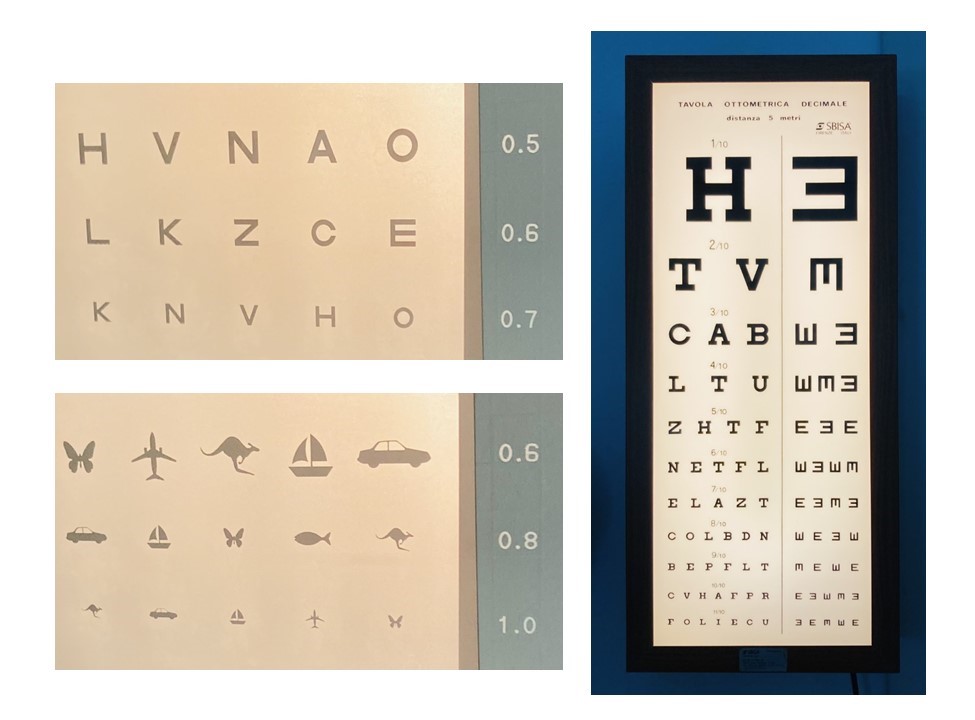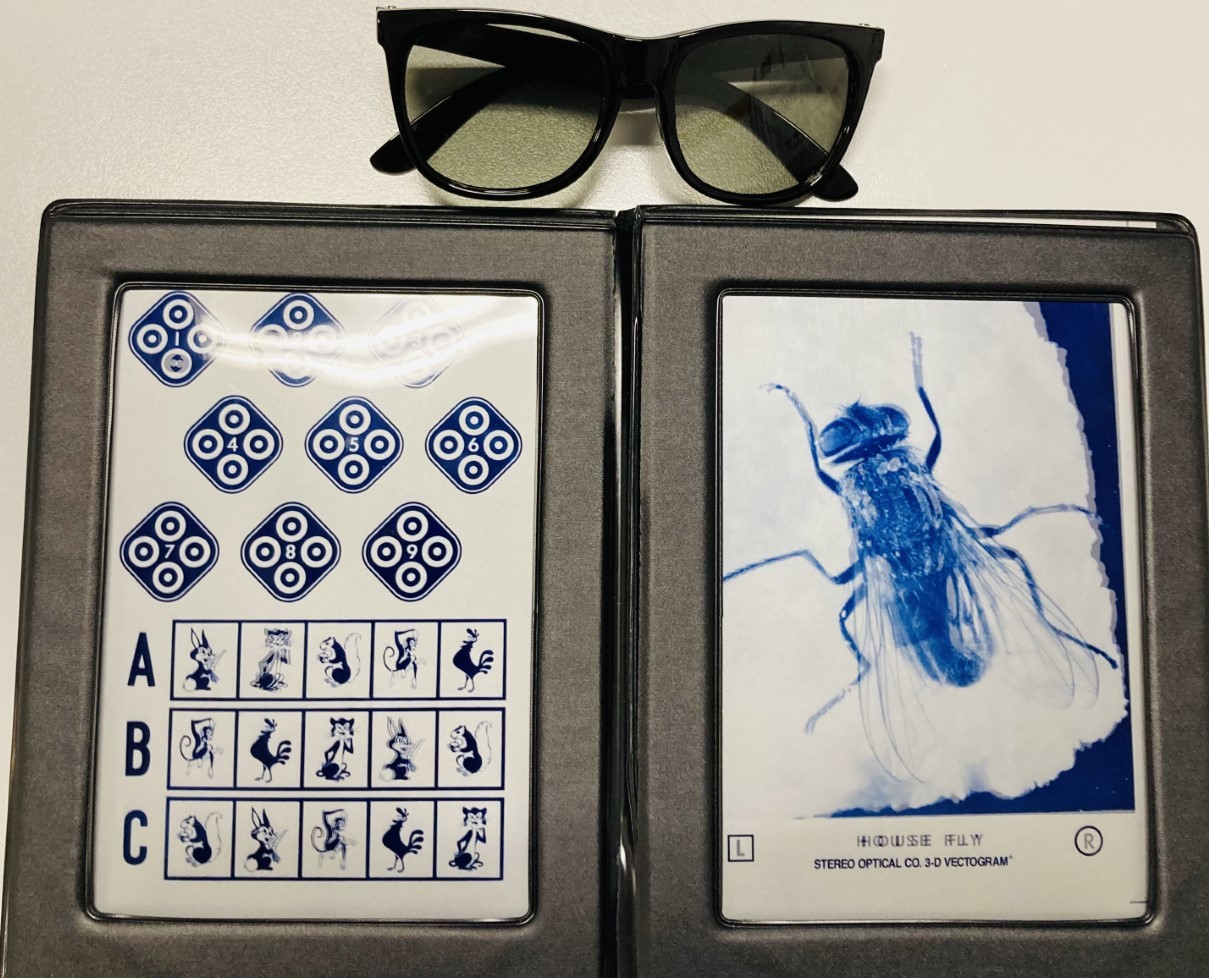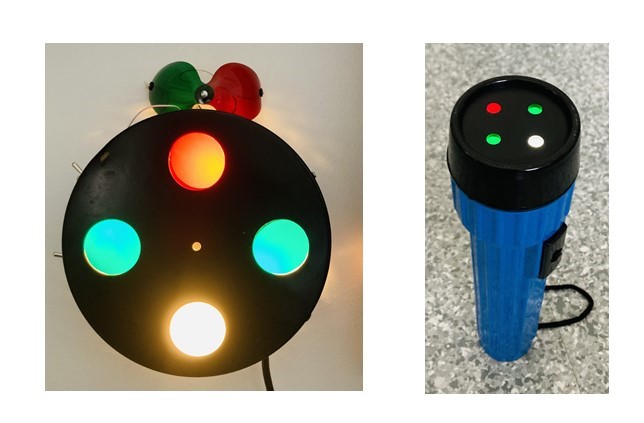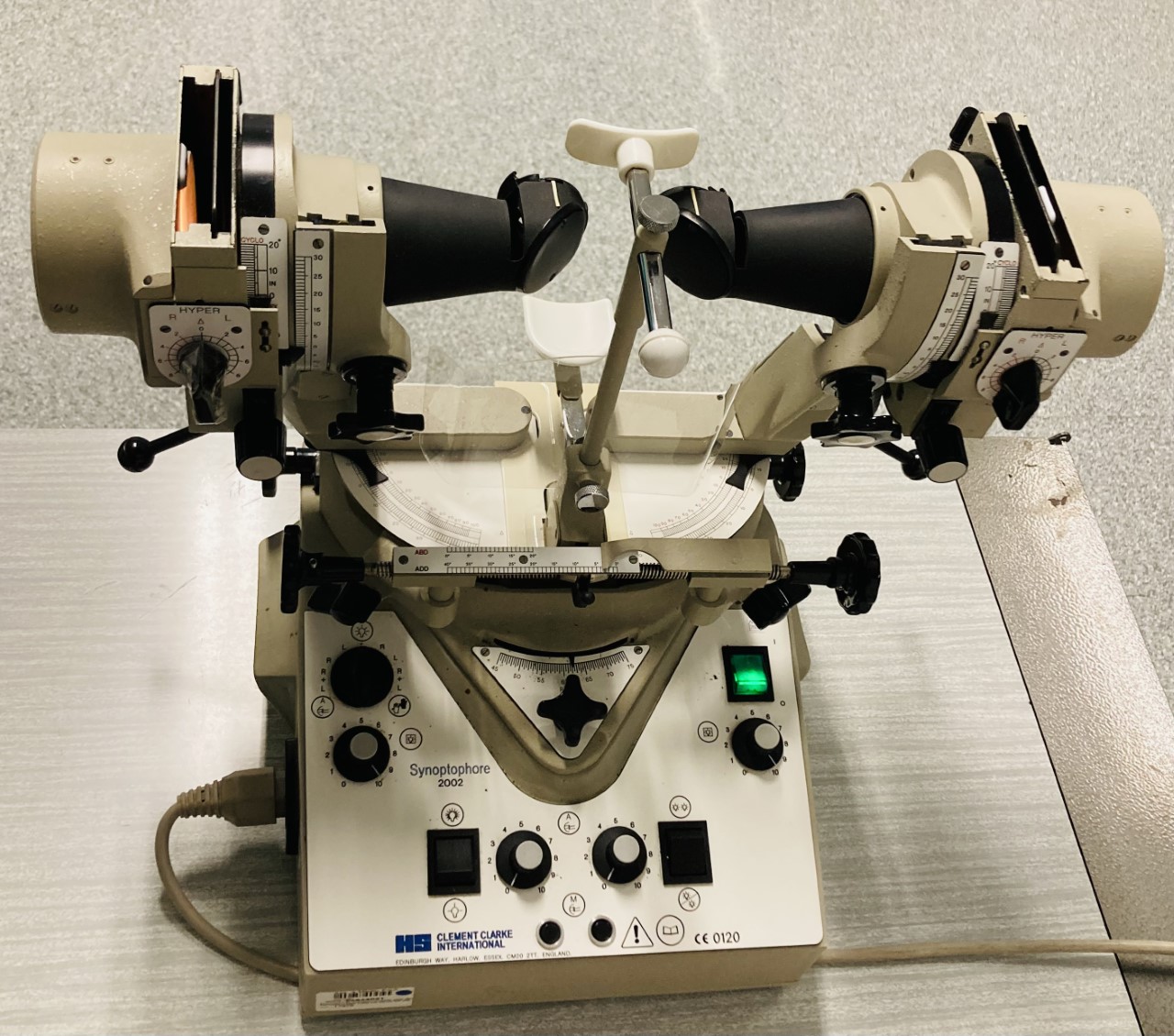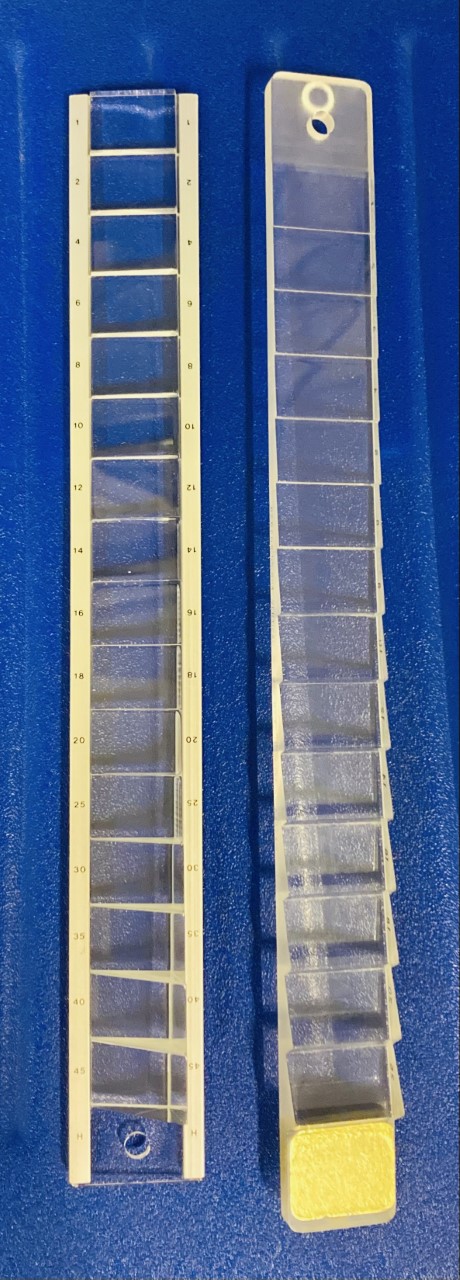[1]
Wu HM, Seet B, Yap EP, Saw SM, Lim TH, Chia KS. Does education explain ethnic differences in myopia prevalence? A population-based study of young adult males in Singapore. Optometry and vision science : official publication of the American Academy of Optometry. 2001 Apr:78(4):234-9
[PubMed PMID: 11349931]
[2]
Tong L, Saw SM, Chia KS, Tan D. Anisometropia in Singapore school children. American journal of ophthalmology. 2004 Mar:137(3):474-9
[PubMed PMID: 15013870]
[3]
Fan DS,Lam DS,Lam RF,Lau JT,Chong KS,Cheung EY,Lai RY,Chew SJ, Prevalence, incidence, and progression of myopia of school children in Hong Kong. Investigative ophthalmology
[PubMed PMID: 15037570]
[4]
Wickremasinghe S,Foster PJ,Uranchimeg D,Lee PS,Devereux JG,Alsbirk PH,Machin D,Johnson GJ,Baasanhu J, Ocular biometry and refraction in Mongolian adults. Investigative ophthalmology
[PubMed PMID: 14985290]
[5]
Ostadimoghaddam H,Fotouhi A,Hashemi H,Yekta AA,Heravian J,Hemmati B,Jafarzadehpur E,Rezvan F,Khabazkhoob M, The prevalence of anisometropia in population base study. Strabismus. 2012 Dec;
[PubMed PMID: 23211139]
[6]
O'Donoghue L,McClelland JF,Logan NS,Rudnicka AR,Owen CG,Saunders KJ, Profile of anisometropia and aniso-astigmatism in children: prevalence and association with age, ocular biometric measures, and refractive status. Investigative ophthalmology
[PubMed PMID: 23233258]
[8]
Chang CH,Tsai RK,Sheu MM, Screening amblyopia of preschool children with uncorrected vision and stereopsis tests in Eastern Taiwan. Eye (London, England). 2007 Dec;
[PubMed PMID: 16946752]
[9]
Huynh SC,Wang XY,Ip J,Robaei D,Kifley A,Rose KA,Mitchell P, Prevalence and associations of anisometropia and aniso-astigmatism in a population based sample of 6 year old children. The British journal of ophthalmology. 2006 May;
[PubMed PMID: 16622090]
[10]
Siegwart JT Jr,Norton TT, Binocular lens treatment in tree shrews: Effect of age and comparison of plus lens wear with recovery from minus lens-induced myopia. Experimental eye research. 2010 Nov;
[PubMed PMID: 20713041]
[11]
Tian Y,Tarrant J,Wildsoet CF, Optical and biometric characteristics of anisomyopia in human adults. Ophthalmic
[PubMed PMID: 21797915]
[12]
Zaka-Ur-Rab S, Evaluation of relationship of ocular parameters and depth of anisometropic amblyopia with the degree of anisometropia. Indian journal of ophthalmology. 2006 Jun;
[PubMed PMID: 16770026]
[13]
Oral Y,Ozgur OR,Akcay L,Ozbas M,Dogan OK, Congenital ptosis and amblyopia. Journal of pediatric ophthalmology and strabismus. 2010 Mar-Apr;
[PubMed PMID: 20349903]
[14]
Vanathi M,Tandon R,Titiyal JS,Vajpayee RB, Case series of 12 children with progressive axial myopia following unilateral cataract extraction. Journal of AAPOS : the official publication of the American Association for Pediatric Ophthalmology and Strabismus. 2002 Aug;
[PubMed PMID: 12185348]
Level 2 (mid-level) evidence
[15]
Quinn GE,Dobson V,Repka MX,Reynolds J,Kivlin J,Davis B,Buckley E,Flynn JT,Palmer EA, Development of myopia in infants with birth weights less than 1251 grams. The Cryotherapy for Retinopathy of Prematurity Cooperative Group. Ophthalmology. 1992 Mar;
[PubMed PMID: 1565444]
[16]
Almeder LM,Peck LB,Howland HC, Prevalence of anisometropia in volunteer laboratory and school screening populations. Investigative ophthalmology
[PubMed PMID: 2243007]
[17]
Abrahamsson M,Sjöstrand J, Natural history of infantile anisometropia. The British journal of ophthalmology. 1996 Oct;
[PubMed PMID: 8976694]
[18]
Pai AS,Rose KA,Leone JF,Sharbini S,Burlutsky G,Varma R,Wong TY,Mitchell P, Amblyopia prevalence and risk factors in Australian preschool children. Ophthalmology. 2012 Jan;
[PubMed PMID: 21963268]
[19]
Dobson V,Harvey EM,Miller JM,Clifford-Donaldson CE, Anisometropia prevalence in a highly astigmatic school-aged population. Optometry and vision science : official publication of the American Academy of Optometry. 2008 Jul;
[PubMed PMID: 18594336]
[20]
Abrahamsson M,Fabian G,Sjöstrand J, A longitudinal study of a population based sample of astigmatic children. II. The changeability of anisometropia. Acta ophthalmologica. 1990 Aug;
[PubMed PMID: 2220360]
[21]
Lepard CW, Comparative changes in the error of refraction between fixing and amblyopic eyes during growth and development. American journal of ophthalmology. 1975 Sep;
[PubMed PMID: 1163595]
Level 2 (mid-level) evidence
[22]
Nastri G,Perugini GC,Savastano S,Polzella A,Sbordone G, The evolution of refraction in the fixing and the amblyopic eye. Documenta ophthalmologica. Advances in ophthalmology. 1984 Jan 30;
[PubMed PMID: 6705671]
Level 3 (low-level) evidence
[23]
Otsuka J,Sato Y, [Comparison of refraction in orthophoric hyperopic eyes and accommodative esotropic eyes]. Nippon Ganka Gakkai zasshi. 1984 Jan;
[PubMed PMID: 6711403]
[24]
Abrahamsson M,Fabian G,Sjöstrand J, Refraction changes in children developing convergent or divergent strabismus. The British journal of ophthalmology. 1992 Dec;
[PubMed PMID: 1486073]
[25]
Barrett BT,Bradley A,Candy TR, The relationship between anisometropia and amblyopia. Progress in retinal and eye research. 2013 Sep;
[PubMed PMID: 23773832]
[26]
Borchert M,Tarczy-Hornoch K,Cotter SA,Liu N,Azen SP,Varma R,MEPEDS Group., Anisometropia in Hispanic and african american infants and young children the multi-ethnic pediatric eye disease study. Ophthalmology. 2010 Jan;
[PubMed PMID: 19818509]
[27]
Giordano L,Friedman DS,Repka MX,Katz J,Ibironke J,Hawes P,Tielsch JM, Prevalence of refractive error among preschool children in an urban population: the Baltimore Pediatric Eye Disease Study. Ophthalmology. 2009 Apr;
[PubMed PMID: 19243832]
[28]
Pediatric Eye Disease Investigator Group.. A randomized trial of atropine vs. patching for treatment of moderate amblyopia in children. Archives of ophthalmology (Chicago, Ill. : 1960). 2002 Mar:120(3):268-78
[PubMed PMID: 11879129]
Level 1 (high-level) evidence
[29]
Antón A,Andrada MT,Mayo A,Portela J,Merayo J, Epidemiology of refractive errors in an adult European population: the Segovia study. Ophthalmic epidemiology. 2009 Jul-Aug;
[PubMed PMID: 19874144]
[30]
Barrett BT,Bradley A,McGraw PV, Understanding the neural basis of amblyopia. The Neuroscientist : a review journal bringing neurobiology, neurology and psychiatry. 2004 Apr;
[PubMed PMID: 15070485]
Level 3 (low-level) evidence
[31]
Lempert P, Optic nerve hypoplasia and small eyes in presumed amblyopia. Journal of AAPOS : the official publication of the American Association for Pediatric Ophthalmology and Strabismus. 2000 Oct;
[PubMed PMID: 11040474]
[32]
Lempert P, Axial length-disc area ratio in esotropic amblyopia. Archives of ophthalmology (Chicago, Ill. : 1960). 2003 Jun;
[PubMed PMID: 12796253]
[33]
Lempert P, Relationship between anisometropia, patient age, and the development of amblyopia. American journal of ophthalmology. 2006 Nov;
[PubMed PMID: 17056388]
[34]
Inatomi M,Kora Y,Kinohira Y,Yaguchi S, Long-term follow-up of eye growth in pediatric patients after unilateral cataract surgery with intraocular lens implantation. Journal of AAPOS : the official publication of the American Association for Pediatric Ophthalmology and Strabismus. 2004 Feb;
[PubMed PMID: 14970800]
[35]
Schaffer DB,Quinn GE,Johnson L, Sequelae of arrested mild retinopathy of prematurity. Archives of ophthalmology (Chicago, Ill. : 1960). 1984 Mar;
[PubMed PMID: 6546680]
[36]
Holmström M,el Azazi M,Kugelberg U, Ophthalmological long-term follow up of preterm infants: a population based, prospective study of the refraction and its development. The British journal of ophthalmology. 1998 Nov;
[PubMed PMID: 9924330]
[37]
Bharadwaj SR,Candy TR, The effect of lens-induced anisometropia on accommodation and vergence during human visual development. Investigative ophthalmology
[PubMed PMID: 21296822]
[38]
Rutstein RP,Corliss D, Relationship between anisometropia, amblyopia, and binocularity. Optometry and vision science : official publication of the American Academy of Optometry. 1999 Apr;
[PubMed PMID: 10333185]
[39]
Loudon SE,Rook CA,Nassif DS,Piskun NV,Hunter DG, Rapid, high-accuracy detection of strabismus and amblyopia using the pediatric vision scanner. Investigative ophthalmology
[PubMed PMID: 21642624]
[40]
Clarke MP,Wright CM,Hrisos S,Anderson JD,Henderson J,Richardson SR, Randomised controlled trial of treatment of unilateral visual impairment detected at preschool vision screening. BMJ (Clinical research ed.). 2003 Nov 29;
[PubMed PMID: 14644966]
Level 1 (high-level) evidence
[41]
Cotter SA,Pediatric Eye Disease Investigator Group.,Edwards AR,Wallace DK,Beck RW,Arnold RW,Astle WF,Barnhardt CN,Birch EE,Donahue SP,Everett DF,Felius J,Holmes JM,Kraker RT,Melia M,Repka MX,Sala NA,Silbert DI,Weise KK, Treatment of anisometropic amblyopia in children with refractive correction. Ophthalmology. 2006 Jun;
[PubMed PMID: 16751032]
[42]
Kulp MT, Foster NC, Holmes JM, Kraker RT, Melia BM, Repka MX, Tien DR, Pediatric Eye Disease Investigator Group. Effect of ocular alignment on emmetropization in children {10 years with amblyopia. American journal of ophthalmology. 2012 Aug:154(2):297-302.e1. doi: 10.1016/j.ajo.2012.02.035. Epub 2012 May 23
[PubMed PMID: 22633344]
[43]
Oliver M,Nawratzki I, Screening of pre-school children for ocular anomalies. II. Amblyopia. Prevalence and therapeutic results at different ages. The British journal of ophthalmology. 1971 Jul;
[PubMed PMID: 5557523]
[44]
Lithander J, Prevalence of amblyopia with anisometropia or strabismus among schoolchildren in the Sultanate of Oman. Acta ophthalmologica Scandinavica. 1998 Dec;
[PubMed PMID: 9881546]
[45]
Stewart CE,Moseley MJ,Stephens DA,Fielder AR, Treatment dose-response in amblyopia therapy: the Monitored Occlusion Treatment of Amblyopia Study (MOTAS). Investigative ophthalmology
[PubMed PMID: 15326120]
[46]
Kivlin JD,Flynn JT, Therapy of anisometropic amblyopia. Journal of pediatric ophthalmology and strabismus. 1981 Sep-Oct;
[PubMed PMID: 7299612]
[47]
de Vries J, Anisometropia in children: analysis of a hospital population. The British journal of ophthalmology. 1985 Jul;
[PubMed PMID: 4016043]
[48]
Fronius M,Sireteanu R,Zubcov A, Deficits of spatial localization in children with strabismic amblyopia. Graefe's archive for clinical and experimental ophthalmology = Albrecht von Graefes Archiv fur klinische und experimentelle Ophthalmologie. 2004 Oct;
[PubMed PMID: 15197557]
[50]
Autrata R, Rehurek J. Laser-assisted subepithelial keratectomy and photorefractive keratectomy versus conventional treatment of myopic anisometropic amblyopia in children. Journal of cataract and refractive surgery. 2004 Jan:30(1):74-84
[PubMed PMID: 14967271]
[51]
Alió JL, Artola A, Claramonte P, Ayala MJ, Chipont E. Photorefractive keratectomy for pediatric myopic anisometropia. Journal of cataract and refractive surgery. 1998 Mar:24(3):327-30
[PubMed PMID: 9559467]
[52]
Zhang J, Yu KM. Femtosecond laser corneal refractive surgery for the correction of high myopic anisometropic amblyopia in juveniles. International journal of ophthalmology. 2017:10(11):1678-1685. doi: 10.18240/ijo.2017.11.07. Epub 2017 Nov 18
[PubMed PMID: 29181310]
[53]
Agarwal A, Agarwal A, Agarwal T, Siraj AA, Narang P, Narang S. Results of pediatric laser in situ keratomileusis. Journal of cataract and refractive surgery. 2000 May:26(5):684-9
[PubMed PMID: 10831897]
[54]
Emara KE, Al Abdulsalam O, Al Habash A. Implantation of spherical and toric copolymer phackic intraocular lens to manage amblyopia due to anisometropic hyperopia and myopia in pediatric patients. Journal of cataract and refractive surgery. 2015 Nov:41(11):2458-65. doi: 10.1016/j.jcrs.2015.05.035. Epub
[PubMed PMID: 26703497]
[55]
Daoud YJ, Hutchinson A, Wallace DK, Song J, Kim T. Refractive surgery in children: treatment options, outcomes, and controversies. American journal of ophthalmology. 2009 Apr:147(4):573-582.e2. doi: 10.1016/j.ajo.2008.12.028. Epub
[PubMed PMID: 19327445]
[56]
BenEzra D, Cohen E, Karshai I. Phakic posterior chamber intraocular lens for the correction of anisometropia and treatment of amblyopia. American journal of ophthalmology. 2000 Sep:130(3):292-6
[PubMed PMID: 11020407]
[57]
Althomali TA. Posterior chamber toric phakic IOL implantation for the management of pediatric anisometropic amblyopia. Journal of refractive surgery (Thorofare, N.J. : 1995). 2013 Jun:29(6):396-400. doi: 10.3928/1081597X-20130410-01. Epub 2013 Apr 17
[PubMed PMID: 23586373]
[58]
Liang YB, Wong TY, Sun LP, Tao QS, Wang JJ, Yang XH, Xiong Y, Wang NL, Friedman DS. Refractive errors in a rural Chinese adult population the Handan eye study. Ophthalmology. 2009 Nov:116(11):2119-27. doi: 10.1016/j.ophtha.2009.04.040. Epub 2009 Sep 10
[PubMed PMID: 19744728]
[59]
Qin XJ, Margrain TH, To CH, Bromham N, Guggenheim JA. Anisometropia is independently associated with both spherical and cylindrical ametropia. Investigative ophthalmology & visual science. 2005 Nov:46(11):4024-31
[PubMed PMID: 16249476]
Level 2 (mid-level) evidence
[60]
Wong TY, Foster PJ, Hee J, Ng TP, Tielsch JM, Chew SJ, Johnson GJ, Seah SK. Prevalence and risk factors for refractive errors in adult Chinese in Singapore. Investigative ophthalmology & visual science. 2000 Aug:41(9):2486-94
[PubMed PMID: 10937558]
[61]
Bourne RR, Dineen BP, Ali SM, Noorul Huq DM, Johnson GJ. Prevalence of refractive error in Bangladeshi adults: results of the National Blindness and Low Vision Survey of Bangladesh. Ophthalmology. 2004 Jun:111(6):1150-60
[PubMed PMID: 15177965]
Level 3 (low-level) evidence
[62]
Lesueur LC, Arne JL. Phakic posterior chamber lens implantation in children with high myopia. Journal of cataract and refractive surgery. 1999 Dec:25(12):1571-5
[PubMed PMID: 10609198]
[63]
Gutowski KA. Evidence-Based Medicine: Abdominoplasty. Plastic and reconstructive surgery. 2018 Feb:141(2):286e-299e. doi: 10.1097/PRS.0000000000004232. Epub
[PubMed PMID: 29373443]

